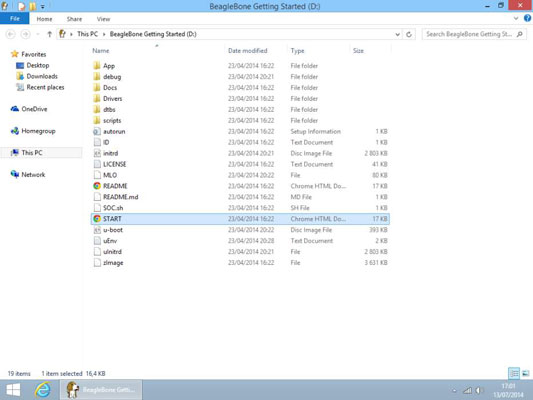
- #Making a microsd image for beaglebone and mac code
- #Making a microsd image for beaglebone and mac download
- #Making a microsd image for beaglebone and mac free
For production use, be sure to switch to a Production image. Note: When you're getting started, a Development image is the most useful, as it permits many testing and troubleshooting features. You can also select whether to use a Development or Production edition with the respective toggle: In general, you should use the most recent version available. Fleets can, however, support any devices that share the same architecture, so you can choose another device type if needed.Īfter selecting a device type, select an OS type of balenaOS, and you will see a list of available balenaOS versions. By default, the device type you chose when you first created the fleet will be selected. Start by clicking Add device in your fleet dashboard:įor most fleets, you will have the option to select a device type. To connect with balenaCloud, your BeagleBone Black needs a balenaOS image configured for your device type, fleet, and network.
#Making a microsd image for beaglebone and mac free
The Starter fleets are full-featured and free for all users, with a limit of up to 10 total devices across all Starter fleets.Īfter the fleet has been created, you will be redirected to the dashboard for the newly created fleet, where you can add your first BeagleBone Black. Note: To create a fleet with multiple containers, you'll want to use the Starter or Microservices fleet type. Select the BeagleBone Black device type, choose a fleet type, enter a name, and click Create new fleet: To create your first fleet, log into your balenaCloud dashboard and click the Create fleet button.

When you provision a device, it is added to a specific fleet, but can be migrated to another fleet at any time. Create a fleetĪ fleet is a group of devices that share the same architecture and run the same code. If you don't already have a balena account, make sure to sign up before continuing. It will also help to use a dongle with a real antenna on it. We also have had instances where when placed in a metal case, there can be WiFi issues as well. You may need to use a extension cable to move the dongle away from the planes of the PCB. Note: Always run the board from 5VDC 1A minimum supply when using a WiFi Dongle. A 5VDC 1A power supply unit for the Beaglebone Black.A mini USB cable the Beaglebone Black OR a micro USB cable for the Green.The WiFi adapter for the Beaglebone Black is known to be unstable at moment, it is recommended that you use a usb WiFi adapter with a large external antenna.

An ethernet cable or WiFi adapter to connect your device to the.We strongly recommend you get hold of a class 10 card or above. The speed class of the card also matters - this determines its maximum transfer rate. Both the Beaglebone Black and Green use a Micro SD card. A Beaglebone Black or Beaglebone Green.
#Making a microsd image for beaglebone and mac download
Once you complete these steps, your BeagleBone Black will download the container image, start your application, and begin sending logs to your balena dashboard! What you will need

#Making a microsd image for beaglebone and mac code
At its most basic, the process for deploying code to a BeagleBone Black consists of two major steps: In this guide, we will build a simple C++ web server project on a BeagleBone Black. Get started with and Get started with BeagleBone Black and C++ Introduction


 0 kommentar(er)
0 kommentar(er)
